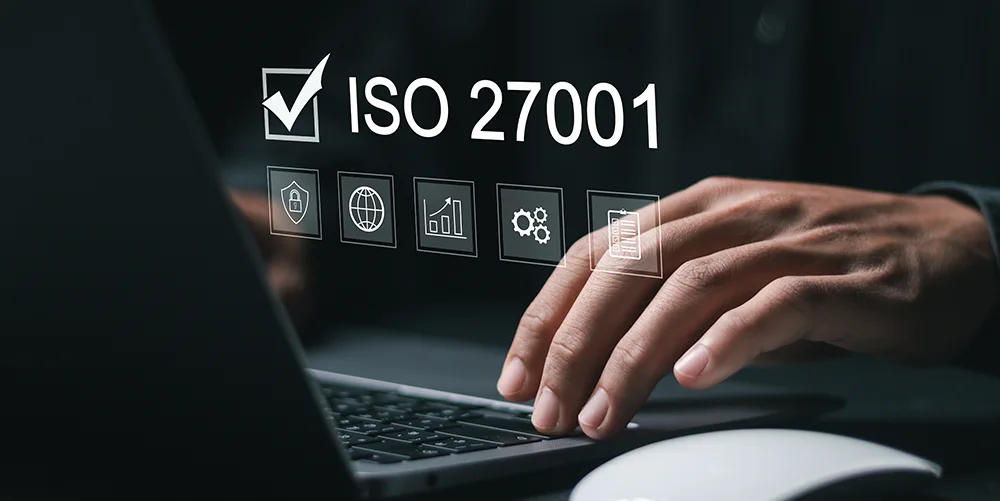What is Shadow IT? – Exploring the risks and opportunities

Posted on August 19, 2024 by Lawrence wilkinson
Welcome to our technical blog, where we share insights and expertise on a variety of technical topics. This post is part of our ongoing series, specifically aimed at professionals in technical roles, providing in-depth information and practical tips.
In today’s fast-paced digital landscape, Shadow IT has become increasingly prevalent. Shadow IT refers to the use of unauthorised or unapproved IT resources such as software, hardware, or services by employees or business units within an organisation. While it can offer certain advantages, it also poses significant risks that need to be carefully managed.
The changing security perimeter
The rise of cloud computing has enabled users to access a variety of applications and data from anywhere, anytime, and on any device. This has increased the productivity, collaboration, and innovation but also added complexity and challenges to IT governance and security, allowing Shadow IT to flourish.
In the past, organisations could secure their data and applications within the physical walls of their physical office or data centre. However, with the rise of cloud computing, that boundary is no longer applicable. This shift introduces new risks and threats that organisations must manage. To secure their data in the cloud, organisations must implement strong authentication, encryption, and access controls, as well as monitor activity for any suspicious behaviour.
The risks of Shadow IT
Shadow IT can introduce a myriad of security, compliance, and operational risks:
- Security Risks: Unauthorised tools may not adhere to the organisation’s security protocols, leading to potential data breaches. For instance, a Sales Director, frustrated by IT delays, independently implemented Salesforce. While this initially boosted sales, it eventually led to a data breach where former employees retained access to sensitive information, resulting in lost deals.
- Compliance Risks: The use of unapproved IT resources can lead to non-compliance with industry regulations and standards. This can result in hefty fines and damage to the organisation’s reputation.
- Operational Risks: Shadow IT can create inefficiencies and redundancies in IT spending and management. Uncoordinated purchases of software and services can lead to overlapping functionalities and wasted resources. Additionally, it can complicate IT governance, making it difficult to maintain a cohesive and secure IT environment.
The opportunities of Shadow IT
Despite its risks, Shadow IT can also highlight unmet needs or preferences of end users. Employees often turn to unauthorised solutions because they find them more agile, convenient, or innovative compared to the tools provided by their organisation. This can serve as valuable feedback for IT departments, indicating areas where current systems may be lacking.
For example, with the Sales Director’s use of Salesforce, the pitfalls only presented themselves because the IT team did not get involved with integrating the software and user onboarding and offboarding procedures. The tool itself demonstrated its potential to significantly improve business revenue and sales team performance. By recognising and addressing these needs, organisations can better align their IT offerings with user expectations, fostering a more productive and satisfied workforce.
Managing Shadow IT
To effectively manage Shadow IT, IT teams should focus on three core areas:
1. Collaboration and Engagement with End Users: Understanding the frustrations and needs of end users is crucial. By engaging with employees and addressing their concerns, IT departments can find appropriate solutions that meet business needs without compromising security.
2. Good Written Policies and End User Training: Clear policies, backed by leadership, along with comprehensive training, can help users understand the importance of adhering to approved IT practices. Explaining the benefits of compliance can encourage users to follow established protocols.
3. Tools to Improve Visibility: Implementing tools that provide visibility into the use of unauthorised applications and data flows can help IT teams monitor and manage Shadow IT effectively. This visibility is essential for identifying potential risks and taking proactive measures to mitigate them.
Finding the right balance
Shadow IT presents a dilemma between ease of use and security. It is important to find the right balance that meets the needs of the users while also ensuring the security of the organisation. Organisations should strive to have policies and procedures in place that allow employees to use technology that is accessible and meets their needs while also preventing the use of technology that poses security risks to the organisation.
A Cloud Access Security Broker (CASB) solution, such as Microsoft’s Defender for Cloud Apps, can help organisations discover, monitor, and control the use of cloud applications and services across their estate. It provides a comprehensive security posture and protection for the organisation by cataloging cloud applications, monitoring user activity, and enforcing IT policies.
Shadow IT is a double-edged sword. While it can pose significant risks to security and compliance, it also offers opportunities for innovation and improved productivity. By understanding and addressing the underlying causes of Shadow IT, organisations can harness its potential while minimising its dangers. Effective management strategies, including user engagement, clear policies, training and enhanced visibility, are key to navigating the complexities of Shadow IT in the modern workplace.
How can we help you?
We’d love to talk to you about your specific IT needs, and we’d be happy to offer a no obligation assessment of your current IT set up. Whether you are at a point of organisational change, unsure about security, or just want to sanity check your current IT arrangements, we’re here to help.







